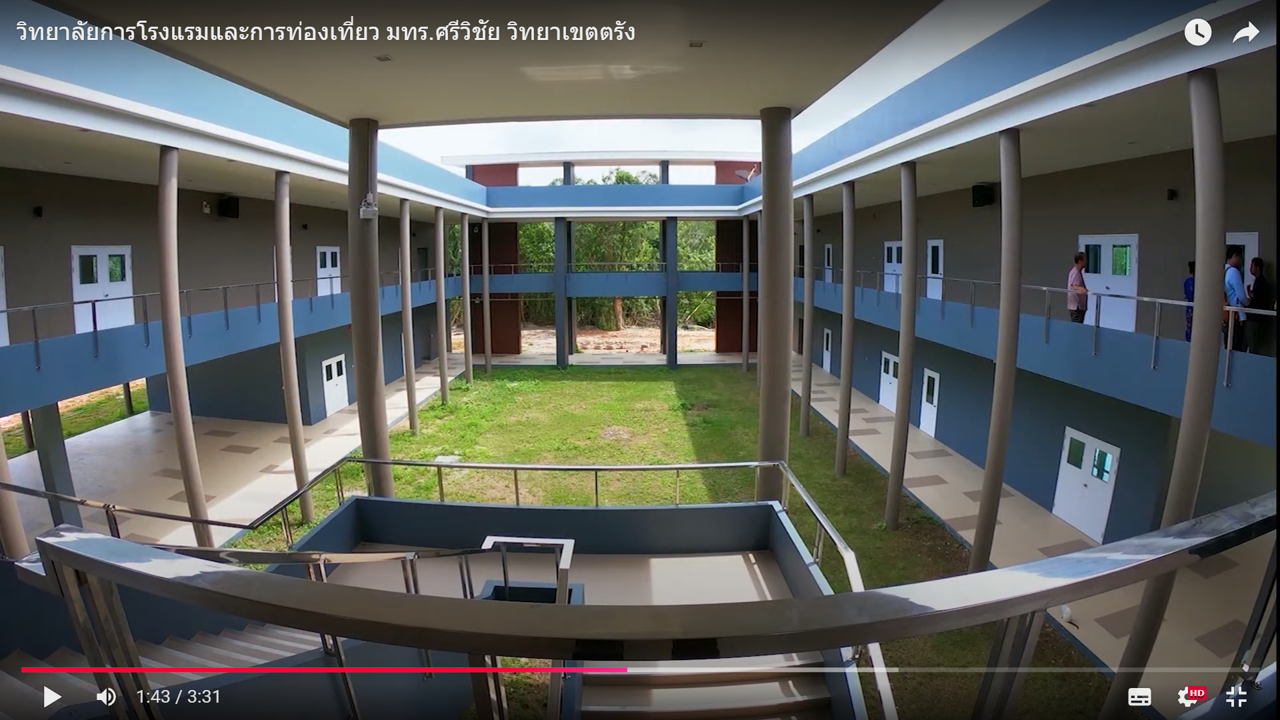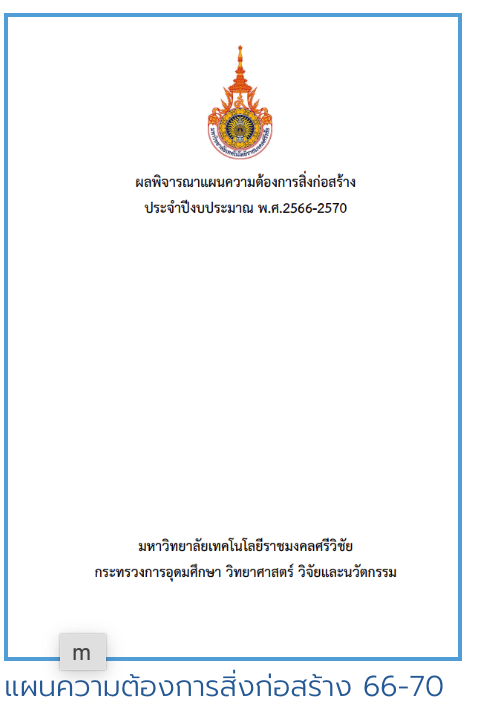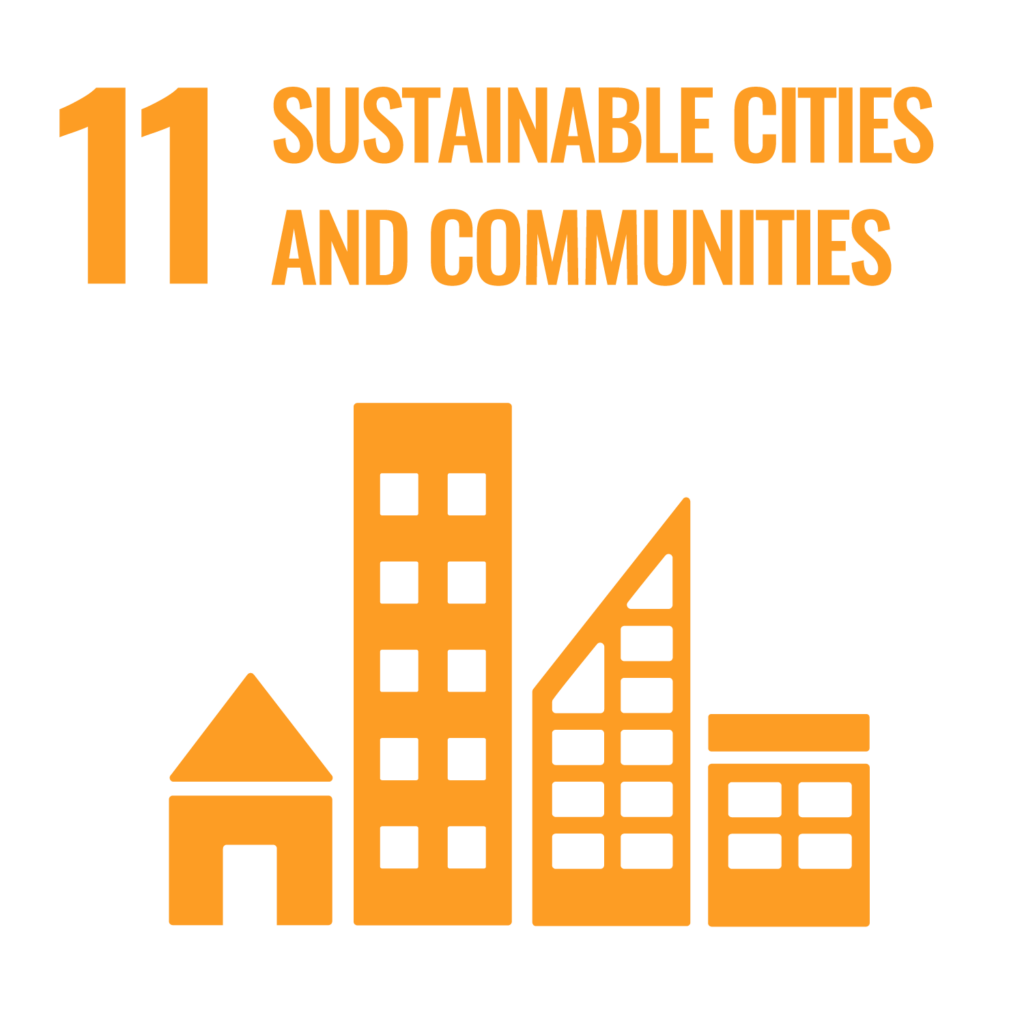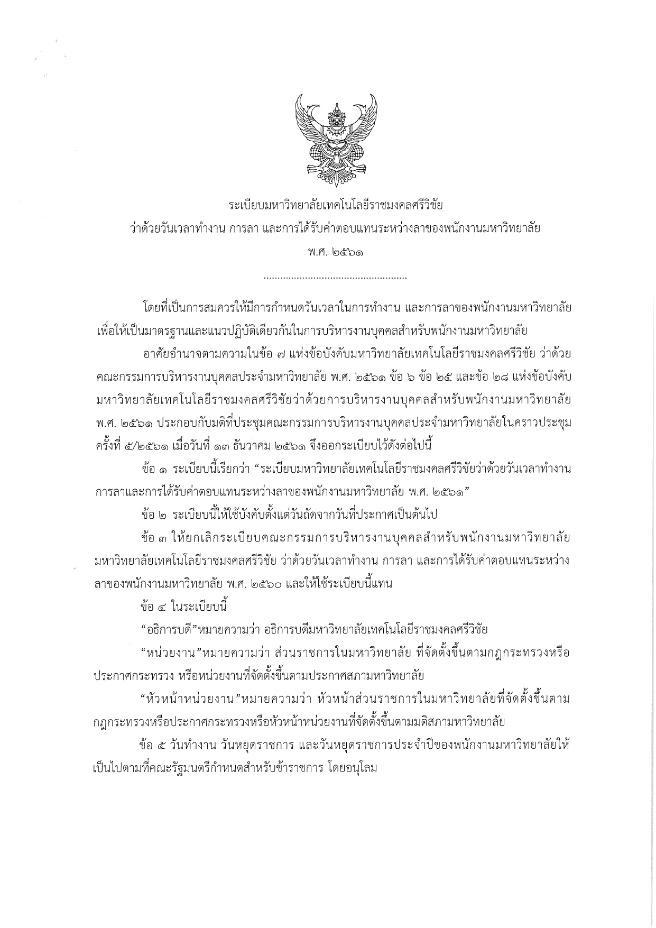Reporters: Dr. Jaray Suwannachart, Asst.Prof.Dr. Tachaya Sangkakool, Asst.Prof.Surawat Moogem and Tussawan Thong-on
Evidence Date: during 2023 Jan-Dec
Related Indicators: 11.4.8
Details:
The university, Rajamangala University of Technology Srivijaya (RUTS), has adopted a policy for energy-efficient building design, emphasizing that future campus buildings should incorporate high-performance ventilation systems through passive design strategies. These designs leverage natural wind and sunlight to complement the coastal climate. Natural ventilation is achieved through strategically placed vents and windows, allowing for optimized airflow that effectively reduces indoor heat and significantly decreases air conditioning usage, leading to substantial energy savings.
At the Trang Campus of RUTS, the newly constructed academic building for the College of Hospitality and Tourism reflects this approach. Located at Rajamangkol Beach in Mai Fat Subdistrict, the building integrates natural ventilation with carefully planned vents and windows to enhance air circulation and cooling.

Picture 2 shows the RUTS College of Hospitality and Tourism building at Mai Fat Subdistrict, Sikao District, Trang Province.

Picture 3 shows the concept of using Passive Design that utilizes natural wind and sunlight at the RUTS College of Hospitality and Tourism.
This initiative at Rajamangala University of Technology Srivijaya (RUTS) has a meaningful impact on both environmental sustainability and educational advancement. By implementing passive design principles that harness natural wind and sunlight, the university reduces energy consumption, thereby lowering carbon emissions and promoting sustainable building practices aligned with climate action goals. This approach serves as a model for energy-efficient architecture in the region, especially suited to coastal climates.
Furthermore, the project enhances the educational experience for RUTS students by providing a tangible example of sustainable design in action. This exposure prepares students to integrate eco-friendly practices in their future careers, supporting long-term sustainable development in both tourism and community infrastructure. The initiative positions RUTS as a leader in sustainable education, inspiring similar efforts across educational and community sectors.
Related Links: https://plan.rmutsv.ac.th/ruts/wp-content/uploads/2024/10/RUTS-long-term-plan-2018-2037.pdf
Ruts have committee to considering all new building or renovate building follow design Guideline as Masterplan for each campus. The picture below show design guideline book for download.

Photo 01 show design guideline book for download as link
More over; all process can follow via RUTS design division as link




